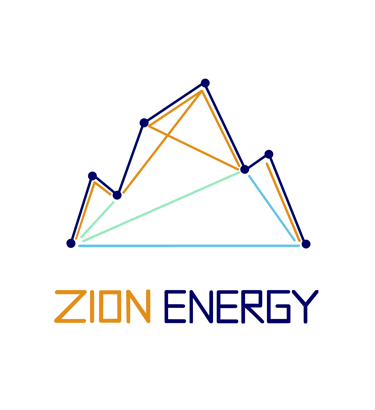How Your Solar PV System Works
Here we will explain all the key factors that go into calculating the output of a solar panel system.
The system production depends on more than just the size of the array. Aspects like inclination, orientation, shading and geographical location will all have a significant effect on an array’s output.
Here we will talk through the 4 main factors that determine system production:








Array size
Inclination and Orientation
Shading
Geographical Location
...Then show you how they fit together.
This is the simplest part to understand... The more panels, the more output.
The only complication is that there are many different-sized panels all with different outputs. This being said, you only need to worry about one calculation and that is for kWp (the sum of the peak power of the panels)
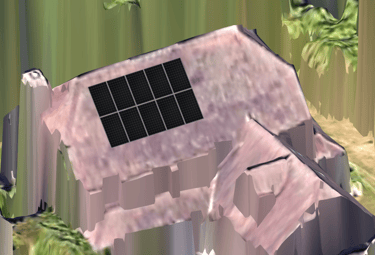

Since space is typically the limiting factor we can simplify system design to maximising the output.
This might seem simple but as we will explain, not every panel is equal, for example adding a panel to a north-facing roof will do very little compared to the same panel facing south.
Although panel output is the most important aspect when choosing a panel, it is always worth comparing other factors. Always consider your preferred aesthetic, performance and product warranties and the price!
Array Size
No. of panels x Panel rating(in Watts)
For example:
1) To calculate for 10 panels rated at 440W
kWp = (10 x 440) / 1000 = 4.4 kW
2) To calculate for 12 panels rated at 350W
kWp = (12 x 350) / 1000 = 4.2 kW
So despite having 2 more panels, the second system is smaller!


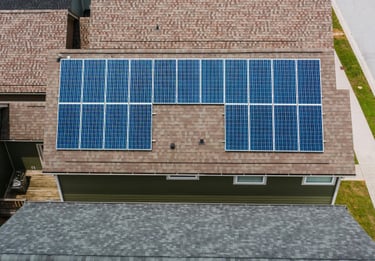



Vs
Vs
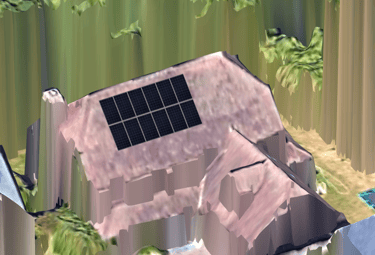

10 panels x 440W Jinko solar panels
25 year performance and product warranty
12 panels x 350W Panasonic solar panels
25 year performance and 15 year product warranty




1000
kWp =
The angle (inclination) and direction (orientation) your panels face affect the direct sunlight that hits them. The longer the panels stay in direct sunlight, the more productive they can be.
Unfortunately, there is often nothing we can do about the direction or angle that your panels face as it is determined by the roof space available.
The graph below shows the percentage of maximum yield you may expect to get for different angles and orientations. This is for a location in the middle of the UK and will change with geographical location.


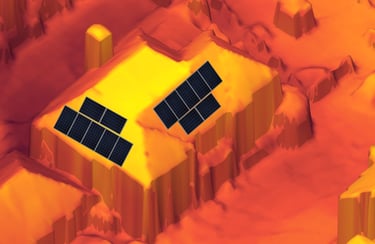

This graph shows that panels facing south at an angle between 30-40 degrees are the optimum. This is due to the sun's position being in the Southern sky for the Northern hemisphere countries (and the Northern sky for the Southern hemisphere). The optimum angle is also determined by the Sun's location and is dependent on the country's distance from the equator.
In the UK, south-facing roofs get the longest sunlight hours and the best panel angle for direct sunlight is between 30-40 degrees.
However, since the Sun's 'location' changes through the seasons, you would ideally have different panel angles for winter when the sun is lower and summer when it’s higher in the sky. This is what tracker systems on solar farms accomplish.
Inclination and Orientation


Orientation
Inclination




Graph showing how the inclination and orientation of your roof affects the amount of sunlight that incidents on it (scale from 0 to 100, with 100 being the highest)
The amount of irradiance (light energy) that falls onto the earth’s surface varies across the UK according to several factors. The most significant factor is distance from the equator, also known as latitude.
We don't need to understand the reasons for this as there isn't anything we can do to affect it.
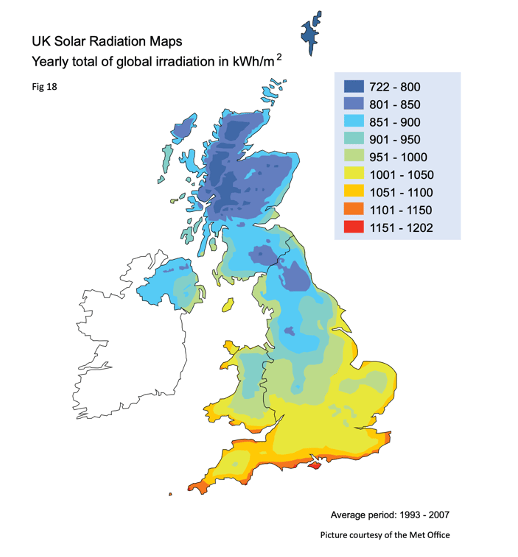

Generally speaking the further North you are the less irradiance there will be; resulting in lower output from your solar PV system. The graph to the left shows the difference in irradiance across the UK, to calculate an estimated system output this has to be taken into account.
Geographical Location


The higher the number the more irradiance that area of the corresponding colour experiences in a year!
The higher the irradiance the higher the annual output of your solar panels!
What does the graph show?




Shading has a significant effect on the output of a solar array. Even a small degree of shading on part of an array can substantially impact the output of the entire array.
Unlike orientation and inclination, shading is an element of solar performance that can be addressed through proper system design – through careful selection of array location, layout, equipment and electrical design.
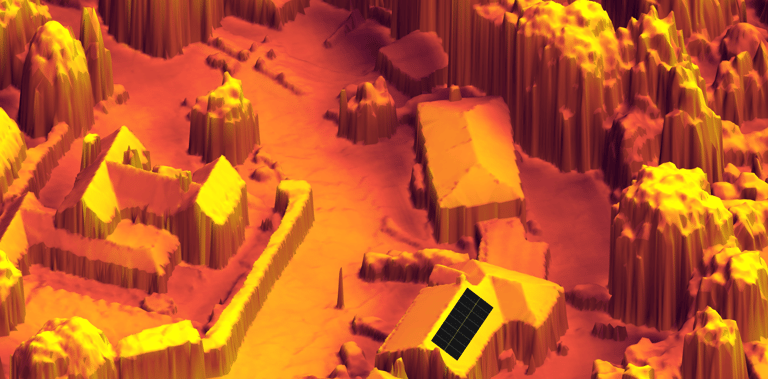

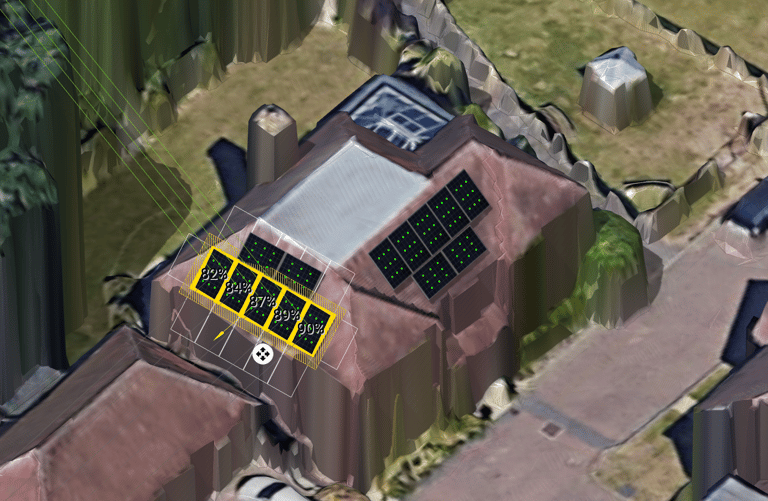

It is always best to avoid shaded areas or relocate shadow-casting objects like vent pipes and satellite dishes, but this is not always plausible. By stringing the shaded panels separately from the rest of the array we can reduce the impact of the shade on the solar performance. The use of voltage optimisers or micro inverters can further help by adding more individualised MPPT* preventing shading on each panel from affecting any others it’s connected to.
Shading

Shade Profile
Let's talk through this shade profile below and explain what it shows us
Roof 1 is darker (signifying more shade)
because it faces North.
These tall, leafy trees block a lot of sun. Especially because they are to the south of the house marked 3!

Roof 3 is facing perfectly south but is shown to be dark... the trees to it's south block most of its sunlight! Here we could use optimisers/micro inverters to mitigate the effects of the shade.

Roof 2 is facing perfectly south and has nothing in front of it! This roof is ideal for solar panels!





*MPPT = Maximum Power Point Tracking. This can be optimised for each string or for each panel if you use optimisers or microinverters.






As discussed, the production of a system depends on more than just the size of the array. Aspects like inclination, orientation, shading and geographical location will all have a significant effect on an array’s output. Therefore, the following equation is used to calculate an estimate of the annual electricity (AC) generated by the system.
Annual AC output (kWh) = kWp x Kk x SF
kWp is the size of the system. This is the sum of the peak power (Wp) taken from the printed label on each module or its corresponding data sheet.
Kk stands for kWh/kWp as is found on various data tables which take into account the geographical location, inclination and orientation of the solar array to determine an estimated output per kWp of solar panels. Since inclination and orientation are involved separate calculations need to be completed for each group of panels with the same angle and direction.
SF is short for shade factor which is determined at a site survey or online using Google Earth’s 3D modelling. SF has a maximum value of 1.0 when there is no shading and will decrease from there depending on levels of shade.


